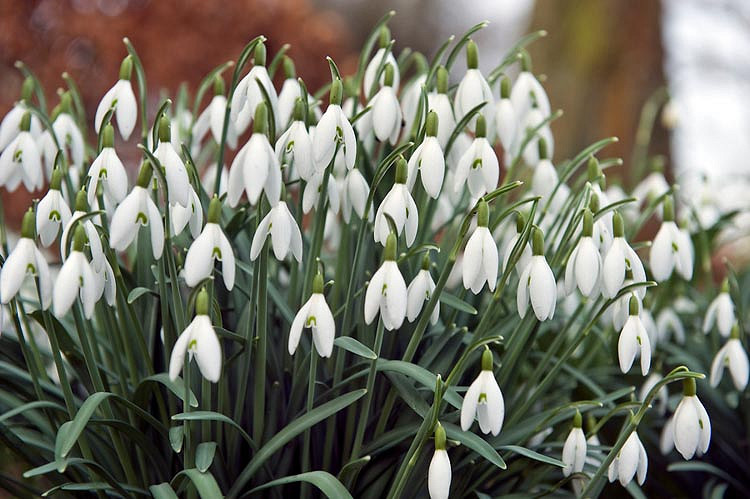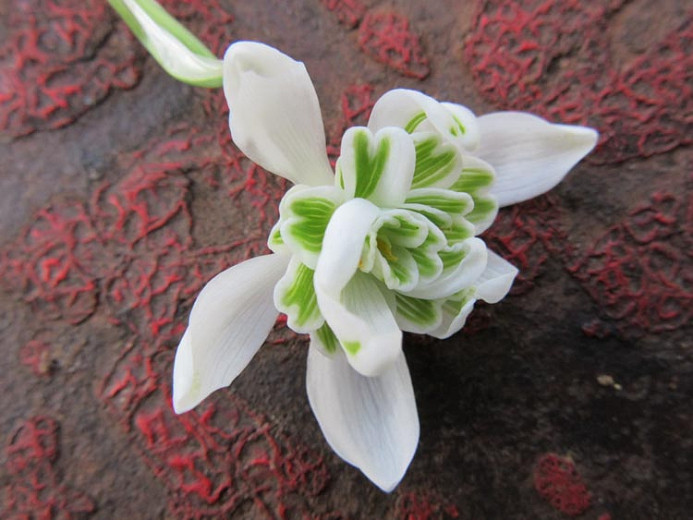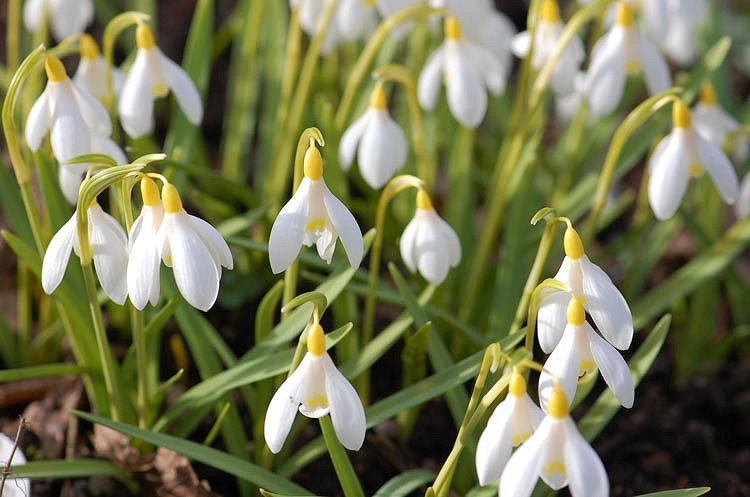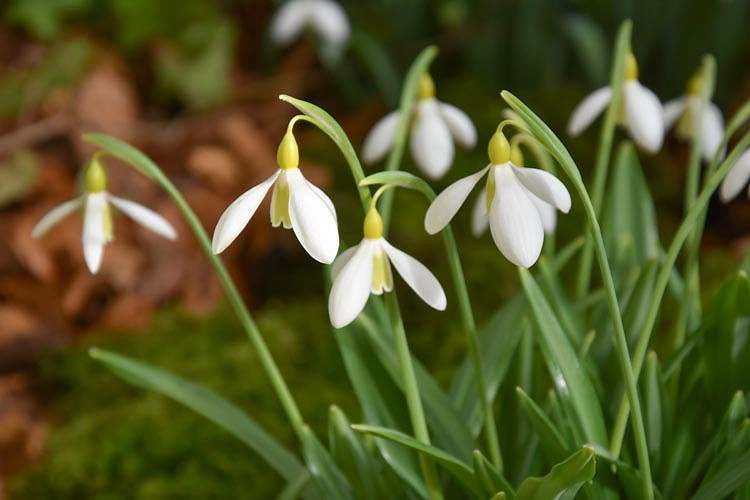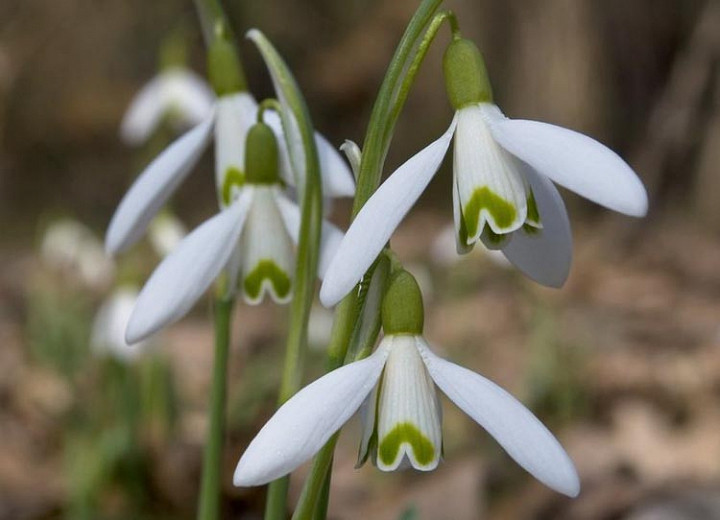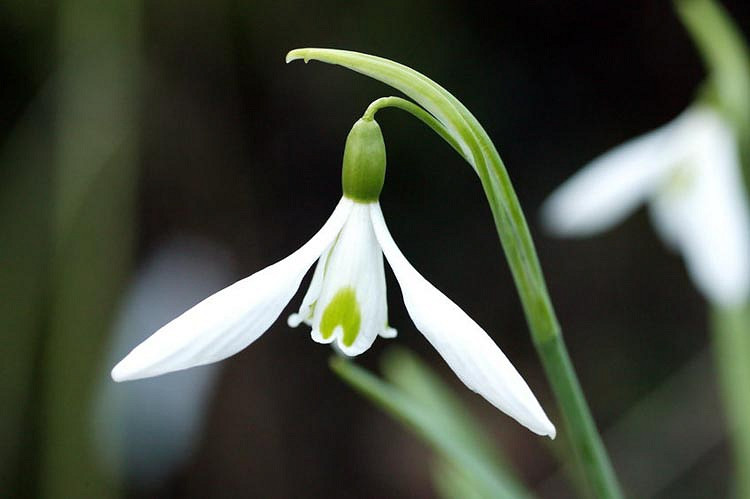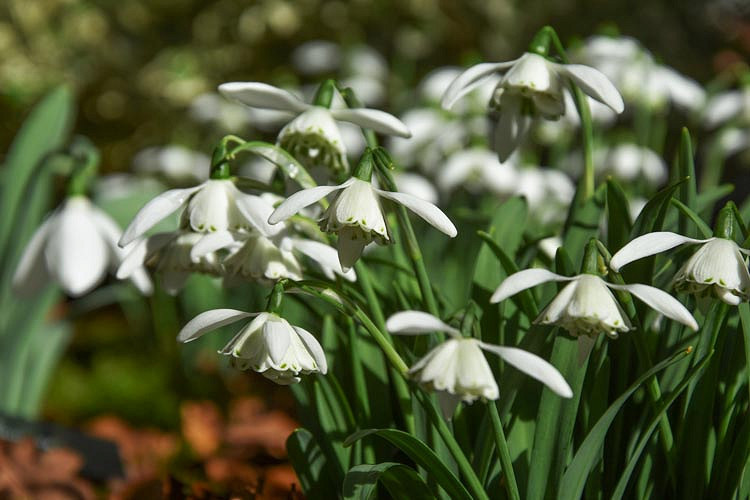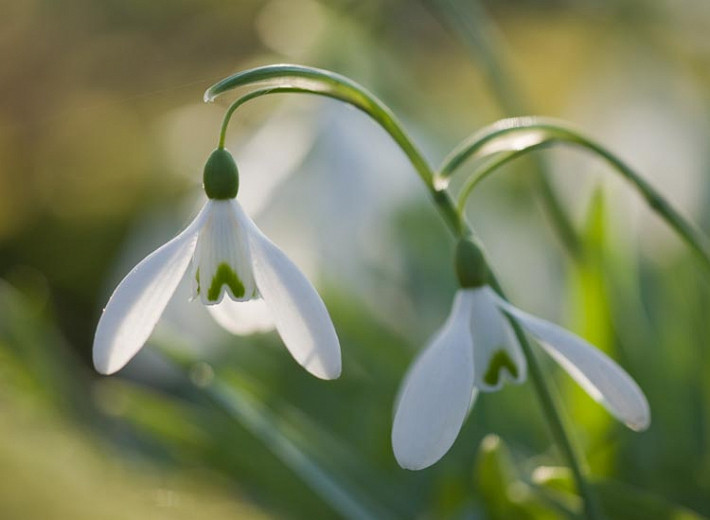Galanthus (Snowdrops)
There are 20 different Snowdrop species and several hundreds of hybrids. Yes, several hundreds (!). The craze known as Galanthophilia has swept through the ranks of gardening enthusiasts in the past few years. While all snowdrops look the same to the uninitiated – dainty, nodding white flowers, with a dab of green, held on a thin arching stalk at the end of a thicker stem – they reveal their differences when you take a closer look.
Prized for their abundant blooms, Snowdrops (Galanthus) are invaluable additions to the garden and provide gardeners with some of the greatest pleasures. Nothing is more uplifting than a carpet of white flowers under bare winter trees. Appealing and highly versatile, these harbingers of spring are tough, cold-hardy, deer or rabbit resistant and easy to grow bulbous perennials. Remarkably resilient, they even bloom beneath a blanket of snow if they have to. They are fabulous at bringing sparkles to the winter garden when most plants are still dormant and bring huge amounts of optimism and great joy.
- There are 20 different Snowdrop species and several hundreds of hybrids. Yes, several hundreds (!). The craze known as Galanthophilia has swept through the ranks of gardening enthusiasts in the past few years. While all snowdrops look the same to the uninitiated – dainty, nodding white flowers, with a dab of green, held on a thin arching stalk at the end of a thicker stem – they reveal their differences when you take a closer look. Some bear single flowers with 3 large outer petals enclosed 3 smaller inner ones. Others feature double flowers with many inner petals resembling petticoats. The foliage of 2-3 strap-like leaves varies considerably across species and cultivars (wide, narrow, twisted, etc).
- Some Snowdrops bloom extremely early and can show up weeks before crocuses do. Others can be found in flower in late May. It should be noted that weather conditions have a huge influence on the flowering season of Snowdrops. The same Galanthus species can bloom considerably earlier or later from one year to the next, depending on how cold or warm the weather is.
- Snowdrops thrive in full sun to part shade. They grow particularly well under deciduous trees where exposure to the sun is full in early spring but gradually change to part shade as the trees leaf out.
- Snowdrops grow in average, moist, well-drained soils. They do not welcome soils that are too fertile, so adding compost, manure or fertilizer should be avoided. It is important that the soil does not dry out in summer
- While extraordinarily good-looking on their own, Snowdrops however look most charming when planted with companion plants. Well-behaved, they make perfect partners with other plants and help create strikingly beautiful combinations in the garden. Choose the right companion plants and extend the season of interest of your garden
Guide Information
| Hardiness | 3 – 8 |
|---|---|
| Heat Zones | 1 – 8 |
| Climate Zones | 1, 2, 3, 4, 5, 6, 7, 8, 9, 14, 15, 16, 17, 1A, 1B, 2A, 2B, 3A, 3B, A1, A2 |
| Plant Type | Bulbs, Perennials |
| Plant Family | Galanthus – Snowdrops |
| Exposure | Partial Sun, Shade |
| Season of Interest | SpringWinter |
| Water Needs | Average |
| Maintenance | Low |
| Soil Type | Chalk, Clay, Loam, Sand |
| Soil pH | Acid, Alkaline, Neutral |
| Soil Drainage | Moist but Well-Drained, Well-Drained |
| Characteristics | Cut Flowers, Fragrant, Showy |
| Tolerance | Clay Soil, Deer, Rabbit |
| Landscaping Ideas | Beds and Borders, Ground Covers, Patio and Containers, Underplanting Roses and Shrubs |
| Garden Styles | City and Courtyard, Gravel and Rock Garden, Informal and Cottage, Prairie and Meadow, Traditional Garden |

